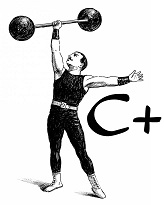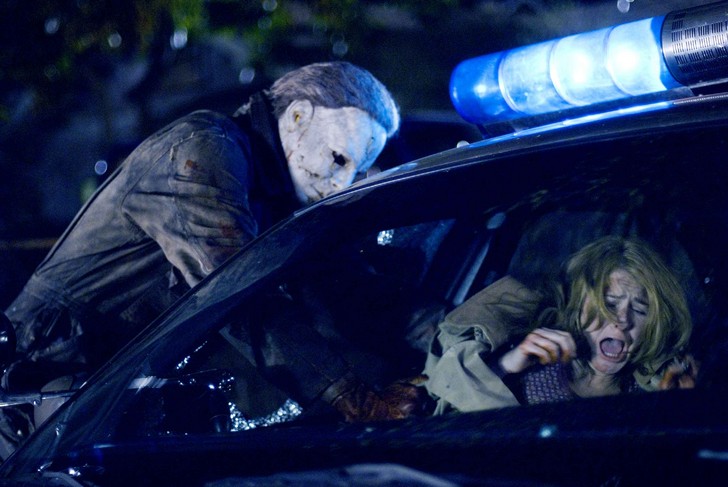For many, the “Halloween” franchise, clocking in at ten films, has gone on far too long (spanning from 1978-2009). However, for true die hards, who can never get enough Michael Myers, the film’s longevity has been a welcome surprise. John Carpenter, who directed the first film in 1978 has long since given up the reins, and, in 2007 an unlikely director threw his hat in the ring for a chance at a remake—musician/filmmaker Rob Zombie. Zombie, whose better-known horror projects include “The Devil’s Rejects” and “House of 1,000 Corpses,” takes the 1978 classic and gives it an upgrade—with mixed results.
The stark difference between Zombie’s version and Carpenter’s lies in the great amount of detail that Zombie injects into the story of Michael Myers before he kills his sister, Judith, and is remanded to an insane asylum for his crimes. Carpenter’s version got right to the punch—Myers murders his sister after probably no more than five minutes into the movie, and we don’t really get to know that much about him. In Zombie’s version, however, this is remedied; the audience sees Michael’s transformation from innocent child to murderer with no hope of rehabilitation.
We get a good look at the Myers family. There’s Michael’s mother Deborah (played by Zombie’s wife, Sheri Moon Zombie), who works as a stripper to provide for her son and daughter (a fact she tries desperately to hide). The script gives less development to her daughter, Judith. She’s played by Hanna Hall and written thinly; the film reduces her to the obnoxious teen role, with Michael a freak ignored by all but his mother. Rounding this out, as Deborah’s abusive live-in boyfriend Ronnie, William Forsythe delivers a dynamic performance, albeit on the sinister side.
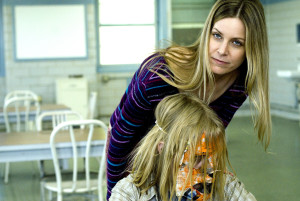
Zombie paints a dark picture of the environment Michael grows up in; and even if we don’t agree with his path, it’s not hard to understand where things went wrong.
These sections of the film succeed due in large part to the writing and detail Zombie brings to the table. However, they are equally effective due to the acting that Daeg Faerich, who plays young Michael, brings alongside it. His fall is slow but steady; we see him go from a shy boy who refuses to take a clown mask off (a doubtless homage to the original film), to one close to getting thrown out of school for mutilating animals, to an individual capable of murder. While these scenes will not be spoiled here, suffice it to say they are brutal and protracted—and not at all the brief, throw-a-way deaths Carpenter’s version brought us all those years ago.
This all of course culminates with Michael’s arrest and imprisonment at Smith Grove Sanitarium, under the care of Dr. Sam Loomis (played by Malcolm McDowell of “A Clockwork Orange” fame), who, seeing no hope for Michael to return to the world, pushes for his permanent incarceration. The scene where Loomis, as Michael’s mother, realize the boy is beyond help is extremely apt; the result is harrowing, irreversible, and bone-chilling.
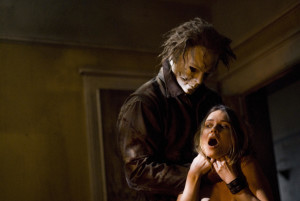
Were the movie to be graded on the powerful opening acts, it would have fared much better. Criticism of the movie, however, comes from Michael’s escape from Smith Grove as an adult, in this film a towering behemoth of a man so strong and tall it’s clear no man is a match for him. Killing a few guards and a kind orderly (Danny Trejo), Michael wanders back to Haddonfield on Halloween to find his half sister Laurie (Scout Taylor-Compton).
The problem with these scenes are that they follow Carpenter’s version almost shot-for-shot; yet Zombie edits out all the original’s scare tactics, going instead for quick kills and violent deaths. There’s almost no time to be afraid of Michael, also, as the film’s beginning takes up so much time. It’s as though Zombie hastily tacked on the original second half of the film on steroids, trying to get through all the plot points with little care for atmosphere or effect. The film as it stands is not all bad; but you have to wonder if “Halloween” should have been a prequel, with the fateful murders on Halloween night saved for the inevitable sequel, or if simply elongating the film would have alleviated this rushed feeling.
That’s not to say the scares are nonexistent, or that “Halloween” isn’t fun. It is. Some fan-favorite scenes are still intact, namely Michael donning a ghost costume to kill an unsuspecting girl, as well as the imposing nature of the “Myers House,” which has lost no creepiness here. The acting is also pretty decent, with Taylor-Compton a believable, modern Laurie Strode. Following her are her friends Annie and Lynda (played by Danielle Harris and Kristina Klebe), who play their parts well. McDowell, for his part, also does an acceptable job, although the film departs widely from the original here. Loomis appears less the passionate psychologist and more a profiteer; he makes a killing off “The Devil’s Eyes,” a book on the story of Myers he has written. This takes away integrity from his character, an attribute that made him so endearing in the late Donald Pleasance’s hands.
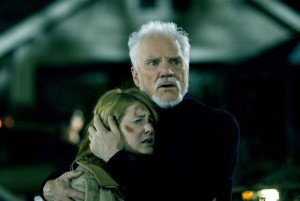
At the end of the day, “Halloween” does what a good remake should do. It modernizes the story for new audiences while upping the ante on production value and special effects. The script is compelling, and “Halloween” never feels unfamiliar or that Zombie is trampling on hallowed ground. The film is scary, and makes Michael once again a terror to behold. However, a touch more editing, as well as a script that perhaps wasn’t so ambitious, might have proven more effective. We go to remakes to get something new while still feeling connected to something old. Zombie gets the new perfectly right in the film’s first and second act. However, by ticking off the third act more obligation than inspiration, “Halloween” comes off shallower than one might have hoped.
